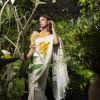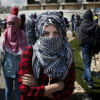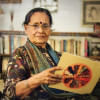Exploring the types of muslin
Muslin is a cotton fabric of plain weave. Hand woven from an uncommon and delicate yarn, it was found in Bangladesh and the Indian State of West Bengal and was exported to Europe for much of the 17th and 18th century.
There are different types of muslin that emerged from different places over the years. Here is a look at the most prominent ones:
Mal - Mal Khash: Derived from Mal-bush Khash which means special clothing, this fine muslin was the designated cloth for the Emperor and his family and was specially made for their use.
Jhuna: Jhuna was another type of muslin that was gauze-like and highly preferred by dancers. The word Jhuna comes from a Hindi word "Jhina" which means "thin." With a low thread number (thread count refers to the number of horizontal and vertical threads per square inch) of 1000, it was highly transparent which led to its ban as an export item. It was however, always popular amongst the wives and harem members.
Rongo: Similar to the Jhuna but described more as "muslin gauze," it was approximately one and a half times heavier than Mal-Mal Khas and also had a low thread number.
Abrawan: The meaning of Abrawan comes from two Farsi words meaning "water" and "flow." This type of muslin was extremely delicate and thin and was thus compared to that of the flowing water.
Khassa: Khassa means very fine and thin muslin. The cloth was plain and famous for its thick weave which had a count of 1400 to 2800. It was mentioned in the book Ain-i-Akbari written by Abu'l-Fazl ibn Mubarak who used to document the administration of emperor Akbar's empire.
Shubnam: Shubnam which means 'morning dew' was such a fine muslin that if the cloth was laid on the grass to be dried, one could hardly differentiate between it and the dew. It usually had a thread count from 700 to 1400.
Alaballee: According to the weavers, alaballee meant "very fine" and was a closely textured muslin. It was mentioned as 'abollai' in the "Sequel to the Periplus of the Erythian Sea." It had a thread number of 1100 to 1900 and was quite heavier compared to the other kinds.
Tanzeb: Tanzeb is another Farsi word which – when broken down – means "body" and "ornament." With a count of 800 to 1900, it was a light and plain muslin.
Taranddam: Taranddan was derived from the Arabic word "turuh" and the Farsi word "anddam" and closely translated, it meant "a kind of cloth for the body." It was imported by the English under this name and was used as wearable cloth. It was plain and had a varying thread count from 1000 to 2700.
Nyansookh: It is said that this particular type of muslin brought "pleasure to the eye." The book, Ain-e-Akbare mentions the use of Nyansookh. The cloth was famous for being a very thin fabric and was used as a neckerchief. The thread number of this particular muslin would vary from 2200 to 2700.
Buddun-Khash: Buddun means "body" while khash means "special." The meaning is self explanatory. This type of muslin was used for making clothes. It was of a very fine cloth even though it was not as closely textured and had a thread count of about 2200.
Surbund: The word Sunbund comes from Farsi words 'sur' and 'bund' meaning "head" and "tie." The 'surbund' was mainly used for head attire, i.e. turbans. It had a thread count of about 2100 and the Company would export this muslin back to the home country. They were mostly used by the English as scarves.
Kamis: Derived from the Arabic word Kamis which means dress, this type of muslin was used to make kurtas. Unlike today, kurta's were once long enough to cover the ankle, and required long pieces of cloth. It was plain and had a thread number of 1400.
Jamdani: Muslin that had woven motifs was always commonly known as Jamdani. 'Jam' meant flowers and 'dani' meant a container thus forming a flower vase of sorts. Jamdani had many great varieties and was always in demand which made it extremely expensive.
Dooria: Dooria, derived from the word Dorakata was a type of stripped muslin. It was done by twisting two or more threads on the loop and using three parts cotton and two parts silk. It was usually made from 'bhoga' or 'sironj' cotton. Dooria was used to make cloths for both men and women and had a thread number that varied from 1500 to 2100.
Charkona: Charkona was a square checkerboard type of designed muslin. Charkona and Dooria were similar in length, weight and thread numbers with the significant difference being that Dooria was striped whereas Charkoa was square in shape and had a design in the four corners.
Even though Muslin has died down over the ages, the small groups of muslin weavers in the Dhaka region did not let the tradition fade out completely. Even though the muslin yarn became a little rougher and the designs became a little simpler, the products of the Bengali weavers – however small scaled – retained its charm and continued to be highly coveted by the members of the genteel society, especially the Hindu community.
In the late 60s of the last century, there came a revival of the loom-embroidered muslin, more commonly known as the Jamdani industry. The Jamdani had motifs with floral and geometric patterns and was believed to be influenced by the Persians. The unique patterns and representations of plants and flowers were skilfully adapted onto the weave of the fabric, with the finest patterns being gentle flowing lines instead of sharp edges. It was the remarkable range and diversity of their patterns that set Jamdani apart from all other muslins.
From Dhaka, Jamdani has been transplanted to other parts of India and gradually evolved over time into many other variations. These variations were later influenced by their respective surroundings and created even more types and styles. These products, today, benefit largely and are supported by organisations with research, funding, marketing and communication. Bangladesh needs to improve dramatically to keep with other country's backing of the lost arts of Muslin.
By Naveed Naushad
For further information contact Saiful Islam, Drik

 For all latest news, follow The Daily Star's Google News channel.
For all latest news, follow The Daily Star's Google News channel. 








Comments